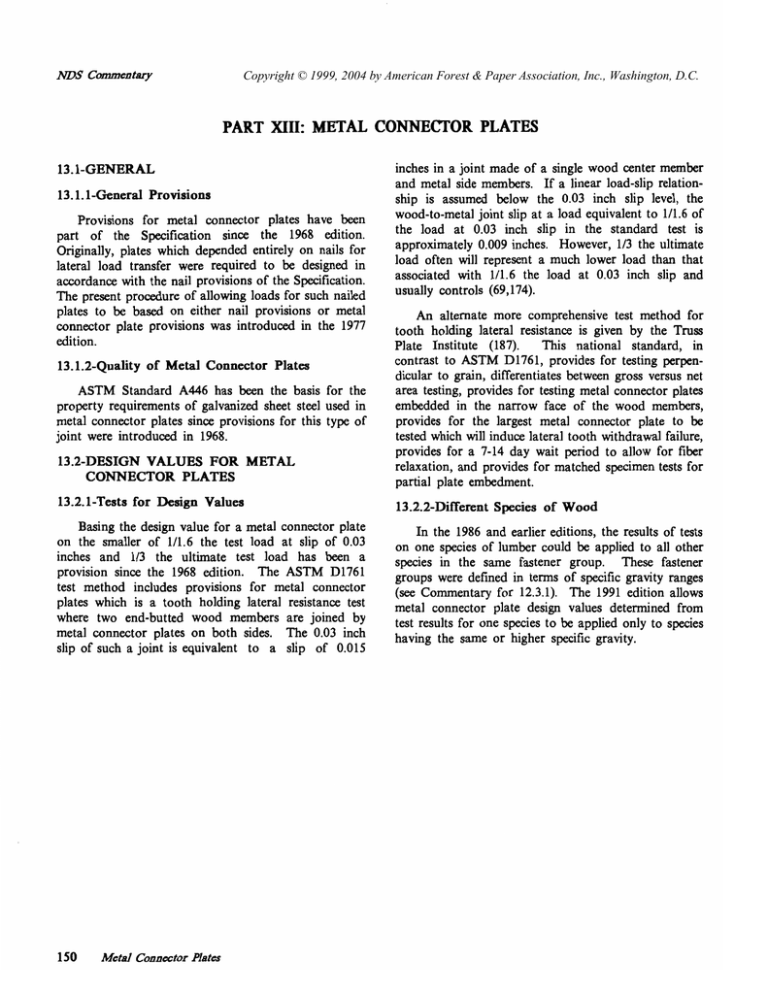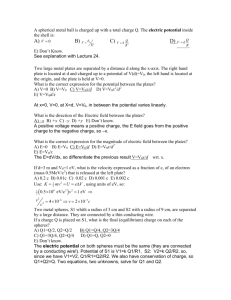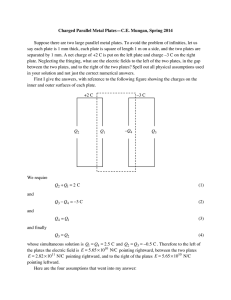PART XIII: METAL CONNEmOR PLATES
advertisement

ADS Commentary Copyright © 1999, 2004 by American Forest & Paper Association, Inc., Washington, D.C. PART XIII: METAL CONNEmOR PLATES 13.1-GENERAL 13.1.1-GeneralProvisions Provisions for metal connector plateshavebeen part of the Specification since the 1968 edition. Originally, plates which depended entirely on nails for lateral load transferwererequired to be designedin accordance with the nail provisions of the Specification. The present procedure of allowing loads for such nailed plates to be based on either nailprovisions or metal connector plateprovisionswas introduced inthe 1977 edition. inches in a joint made of a single wood center member and metal side members. If a linear load-slip relationship isassumedbelowthe 0.03 inchsliplevel,the wood-to-metal joint slip at a load equivalent to 1/1.6 of the load at 0.03 inchslipinthe standard test is approximately 0.009 inches.However, 1/3 theultimate load often will represent a much lower load than that associatedwith 1/1.6 the load at 0.03 inchslip and usually controls (69,174). 13.2-DESIGN VALUES FOR METAL COMNECTOR PLATES An alternate morecomprehensivetestmethod for tooth holding lateral resistanceisgiven by the Truss Plate Institute (187). This national standard, in contrast to ASTMD1761, provides for testing perpendicular to grain, differentiates between gross versus net area testing, provides for testing metal connector plates embeddedinthe narrow faceofthewoodmembers, provides for thelargestmetal connector plateto be tested which will induce lateral tooth withdrawal failure, provides for a 7-14 day waitperiod to allow for fiber relaxation, and provides for matched specimen tests for partial plate embedment. 13.2.1-Tests for Design Values 13.2.2-Different Species of Wood 13.1.2-Quality of Metal Connector Plates for the ASTM Standard A446 has beenthebasis property requirements of galvanized sheet steel used in metal connector plates since provisions for this type of joint were introduced in 1968. Basing the design value for a metal connector plate on the Smaller of ll1s6 the test load at Of inches and 113 the ultimate test load has been species a the in Provisionsincethe 1968 edition* The ASTM D1761 test method includesprovisions for metalconnector plateswhichisa tooth holding lateral resistancetest where two end-butted woodmembers are joined by metal connector plates onboth sides. The 0.03 inch slipofsucha joint isequivalent to aslipof 0.015 O s o 3 150 Metal Connector Plates In the 1986 and earlier editions, the results of tests on one species of ]umber could be applied to a]] other Same fastener group. fastener groups were defined in terms of specific gravity ranges (see Comentary for 12.3.1). The 1991 edition allows metal connector plate design values determined from testresults for onespecies to be appliedonly to species having the same or higher specific gravity.








